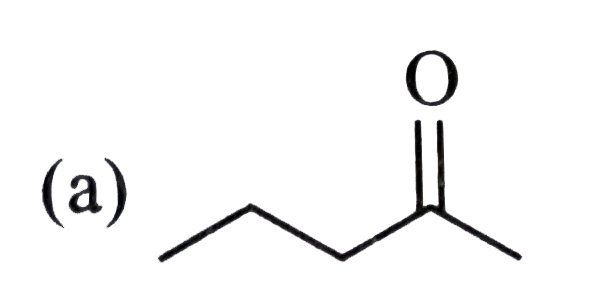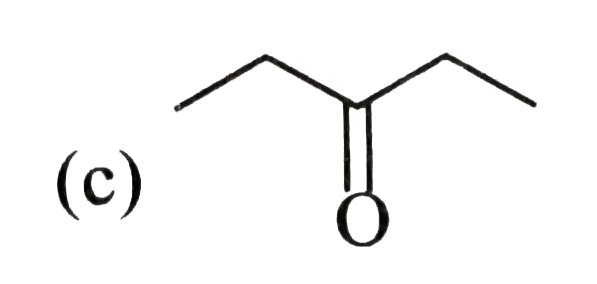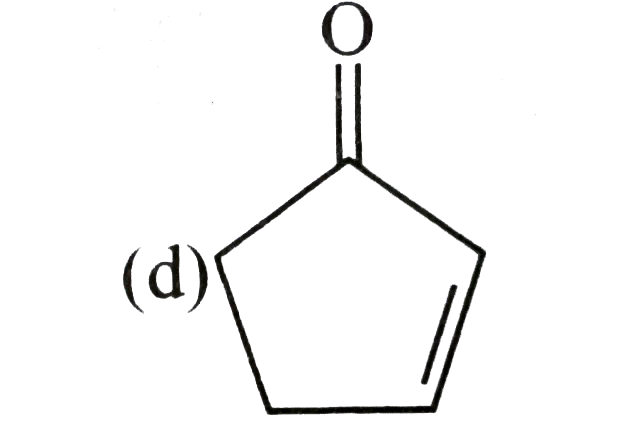Give reasons for the following :
(ii) Treatment of C6H5CHO with HCN gives a mixture of two isomers which cannot be separted even by fractional distillation.
To understand why the treatment of benzaldehyde (C6H5CHO) with hydrogen cyanide (HCN) results in a mixture of two isomers that cannot be separated by fractional distillation, let's break down the process step by step.
Step 1: Reaction of Benzaldehyde with HCN
When benzaldehyde (C6H5CHO) reacts with hydrogen cyanide (HCN), the nucleophile (CN⁻) attacks the electrophilic carbon of the carbonyl group (C=O) in benzaldehyde. This leads to the formation of a cyanohydrin.
Step 2: Formation of Two Isomers
The carbon atom in the carbonyl group is sp² hybridized and planar. This allows the nucleophile (CN⁻) to attack from either above or below the plane of the carbonyl group. As a result, two different stereoisomers (enantiomers) are formed:
1. One where the CN group is above the plane of the molecule.
2. One where the CN group is below the plane of the molecule.
These two products are mirror images of each other and are known as enantiomers.
Step 3: Characteristics of the Isomers
Both of these isomers have the same molecular formula and the same connectivity of atoms, but they differ in their spatial arrangement. Because they are enantiomers, they will exhibit optical activity, meaning they can rotate plane-polarized light in opposite directions.
Step 4: Separation Difficulty
Enantiomers have identical physical properties (such as boiling point and solubility) in a symmetric environment. Therefore, they cannot be separated by conventional methods like fractional distillation, which relies on differences in boiling points. Since both isomers have the same boiling point, fractional distillation will not work, and they will remain as a racemic mixture.
Conclusion
The treatment of benzaldehyde with HCN results in a mixture of two enantiomers that cannot be separated by fractional distillation due to their identical physical properties.
---
When benzaldehyde (C6H5CHO) reacts with hydrogen cyanide (HCN), the nucleophile (CN⁻) attacks the electrophilic carbon of the carbonyl group (C=O) in benzaldehyde. This leads to the formation of a cyanohydrin.
The carbon atom in the carbonyl group is sp² hybridized and planar. This allows the nucleophile (CN⁻) to attack from either above or below the plane of the carbonyl group. As a result, two different stereoisomers (enantiomers) are formed:
2. One where the CN group is below the plane of the molecule.
Both of these isomers have the same molecular formula and the same connectivity of atoms, but they differ in their spatial arrangement. Because they are enantiomers, they will exhibit optical activity, meaning they can rotate plane-polarized light in opposite directions.
Enantiomers have identical physical properties (such as boiling point and solubility) in a symmetric environment. Therefore, they cannot be separated by conventional methods like fractional distillation, which relies on differences in boiling points. Since both isomers have the same boiling point, fractional distillation will not work, and they will remain as a racemic mixture.
The treatment of benzaldehyde with HCN results in a mixture of two enantiomers that cannot be separated by fractional distillation due to their identical physical properties.
Topper's Solved these Questions
- BOOK - CBSE COMPLEMENTARY MATERIALCHAPTER - ALDEHYDES,KETONES AND CARBOXYLIC ACIDSEXERCISE - LONG ANSWER TYPE QUESTIONS (5 MARKS)21videos
ALDEHYDES,KETONES AND CARBOXYLIC ACIDS
- BOOK - CBSE COMPLEMENTARY MATERIALCHAPTER - ALDEHYDES,KETONES AND CARBOXYLIC ACIDSEXERCISE - SHORT ANSWER -I TYPE QUESTIONS (2 MARKS)30videos
ALDEHYDES,KETONES AND CARBOXYLIC ACIDS
- BOOK - CBSE COMPLEMENTARY MATERIALCHAPTER - ALCOHOLS, PHENOLS AND ETHERSEXERCISE - LONG ANSWER TYPE QUESTIONS (5 Marks)5videos
ALCOHOLS, PHENOLS AND ETHERS
- BOOK - CBSE COMPLEMENTARY MATERIALCHAPTER - AMINESEXERCISE - 5 MARKS7videos
AMINES
Similar Questions
Treatment of C6H5CHO with HCN gives a mixture of two isomers which cannot be separated even by very careful fractional distillation. Explain
View SolutionGive reasons for the following :
(a) Carboxylic acids do not give characteristic reactions of carbonyl group.
(b) Treatment of benzaldehyde with HCN gives a mixture of two isomers which cannot be separated even by careful fractional distillation.
(c) Sodium bisulphite is used for the purification of aldehydes and ketones.View Solution
Knowledge Check
- Question 1 - Select One
Which of the following reagent convert
C6H5CHO→C6H5COOHAFehling solutionBPCCCTollen's reagentDH2+Ni - Question 2 - Select One
Which of the following on reation with axcess of NaHSO3 in aqueous solution will give mixeture of salts which can be separted into fraction by fractional crystallization?
A B
B C
C D
D
- Question 3 - Select One
The following reaction,
 +C6H5CO3H. Gives :Aan esterBan anhydrideCa carboxylic acidDan alcohol.
+C6H5CO3H. Gives :Aan esterBan anhydrideCa carboxylic acidDan alcohol.
Give reasons for the following : (i) C6H5COOH is weaker than formic acid.
View SolutionCannizzaro reaction of C6H5CHO in the presence of NaOH gives
View SolutionWhich of the following pair of isomers cannot be separated by fractional crystallization or distillation or chromatography ?
View SolutionFor C6H5CHO which of the following is incorrect
View SolutionWhich of the following on treatment with XeF6gives Xe ?
View Solution

